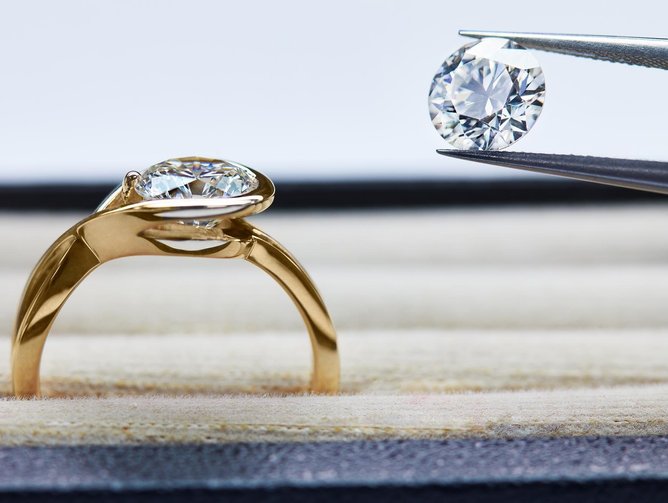Pandora Driving Sustainability in the Jewellery Industry

In a ground-breaking move, Pandora has ditched the mining of precious metals and instead turned to recycled silver and gold for all its jewellery.
This shift in sourcing by the world’s biggest jewellery brand is not just significant for Pandora, and the planet – but the entire jewellery industry.
A vast consumer of precious metals, the jewellery industry relies heavily on mining – an industry with a weighty carbon footprint.
For every piece of jewellery made, 95% of the carbon emissions is in the mining and production of the metals, according to non-profit Pure Earth.
Pandora Avoids Significant Emissions with Shift to Recycled Metals
For Pandora, whose jewellery is primarily made from silver and gold and buys around 340 tonnes one tonne of gold every year, the switch to 100% recycled from the second half of 2024 is therefore significant.
The Danish company will avoid some 58,000 tonnes of GHG emissions per year – equivalent to the annual electricity use of 11,000 homes or driving 6,000 cars around the world.
This cuts Pandora’s supply chain CO2 emissions by around one-quarter, with the company producing 264.224 tonnes of indirect CO2 in 2022, according to its annual report – and puts Pandora ahead of its goal to source 100% recycled silver and gold by 2025.
As CEO Alexander Lacik puts it: “Recycling can significantly reduce the climate footprint of the jewellery industry."
And it can do so without compromising on the quality of the product.
“Precious metal can be recycled forever without any loss of quality. Silver originally mined centuries ago is just as good as new.”

This is welcome news for a brand best known for its sterling-silver charm bracelets – and good news for the industry at large, where having a transparent supply chain for raw materials is no longer merely a nice-to-have.
And yet less than 20% of the world’s silver supply comes from recycled sources.
That’s not to say that recycled doesn’t pose risks too. With stolen metals often sold as scrap to be recycled, proving the provenance of metals can be difficult.
Which is why Pandora uses a chain of custody standard developed by the Responsible Jewellery Council (RJC).
One of the strictest standards in the industry, this requires Pandora’s suppliers to switch their operations to only source materials that are certified recycled, bringing in new processes and equipment to ensure complete segregation.
Driven by this standard, pieces are crafted at Pandora’s facilities in Thailand, which employs 13,200 workers, before being sold in more than 100 countries on six continents through 6,500 points of sale, including 2,500 concept stores.

Pandora Looks to Low-Carbon Future
Responsible business practices such as recycling of materials and waste have always been part of Pandora’s way of operating – as the company’s ambitious targets and achievements prove.
With a significant footprint that includes 32,000 people worldwide and 2,500 concept stores, Pandora has plans to halve greenhouse gas emissions across its value chain by 2030 and be a net-zero company by 2040.
In actioning this sustainability strategy, the US$3.89 billion business is increasingly turning towards low-carbon materials – from lab-grown diamonds and recycled metals to eco-friendly packaging.
Take packaging. Pandora has created box designs made with less plastic and fewer materials that are now easier to recycle. This has resulted in more than 60% fewer greenhouse gases, compared to earlier boxes.
While the paper used in Pandora packaging is FSCTM-certified, meaning it comes from well-managed forests and recycled sources.
In 2021, Pandora committed to using only lab-grown diamonds and has since launched three collections and a campaign, which sends the message that lab-grown is not just more accessible in pricing, but kinder to the planet.

Pandora, Lab-Grown Diamonds & Future of the Industry
With a significantly lower carbon footprint compared to mined diamonds. Pandora Lab-Grown Diamonds come with just 5% of the CO2 emissions, having been grown, cut and polished using 100% renewable energy and set in 100% recycled silver and gold.
To put this in perspective, if all diamond roughs were mined with the same low-carbon footprint as Pandora, it would save more than 6 million tonnes of CO2 annually, according to S&P Global – that’s the equivalent to replacing all cars in NYC with EVs.
While lab-grown diamonds still only make up around 10% of all diamond sales, the market is expected to double by 2031 and be worth US$55.5 billion.
Jewellery set with lab-grown diamonds advanced 32% in value and 52% on a unit sales basis year-over-year, while natural diamond value sales were down 9% and unit sales of 10%.
The proof for Pandora in moving to more sustainable sourcing is in the sales, with the company continuing to outperform the market in revenue – against a backdrop of a globally declining jewellery market.
On the back of strong 2023 growth, Pandora recently raised its sales expectations for the next few years, predicting revenue to reach US$5.11 billion by 2026, a 33% jump from its estimated 2023 forecast.
“We have fundamentally changed how we work, and the organisation is much stronger,” said Lacik.
*******************
Make sure you check out the latest edition of Sustainability Magazine and also sign up to our global conference series - Sustainability LIVE 2024.
*******************
Sustainability is a BizClik brand.






